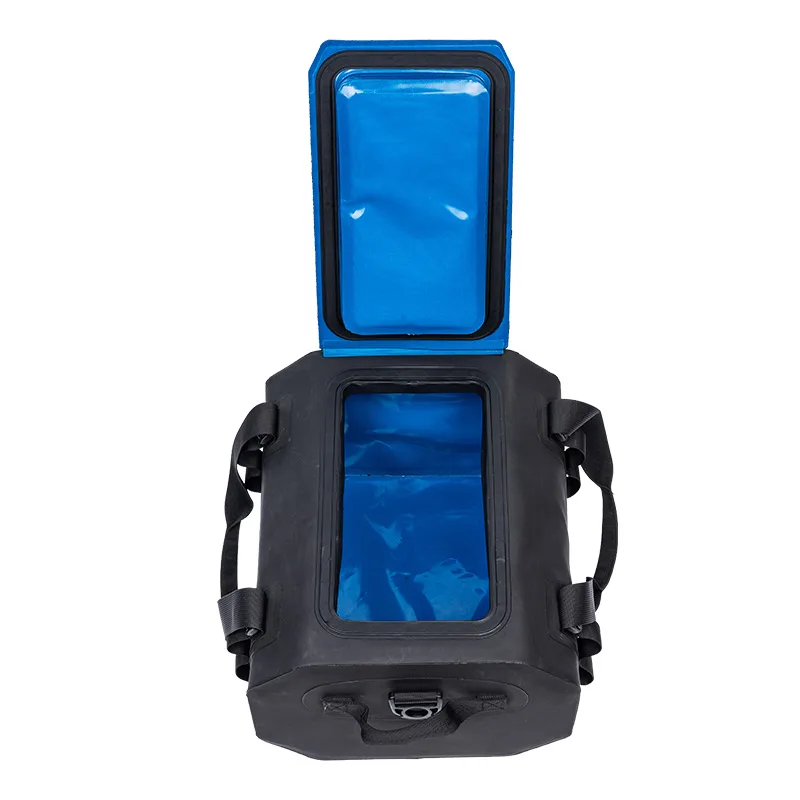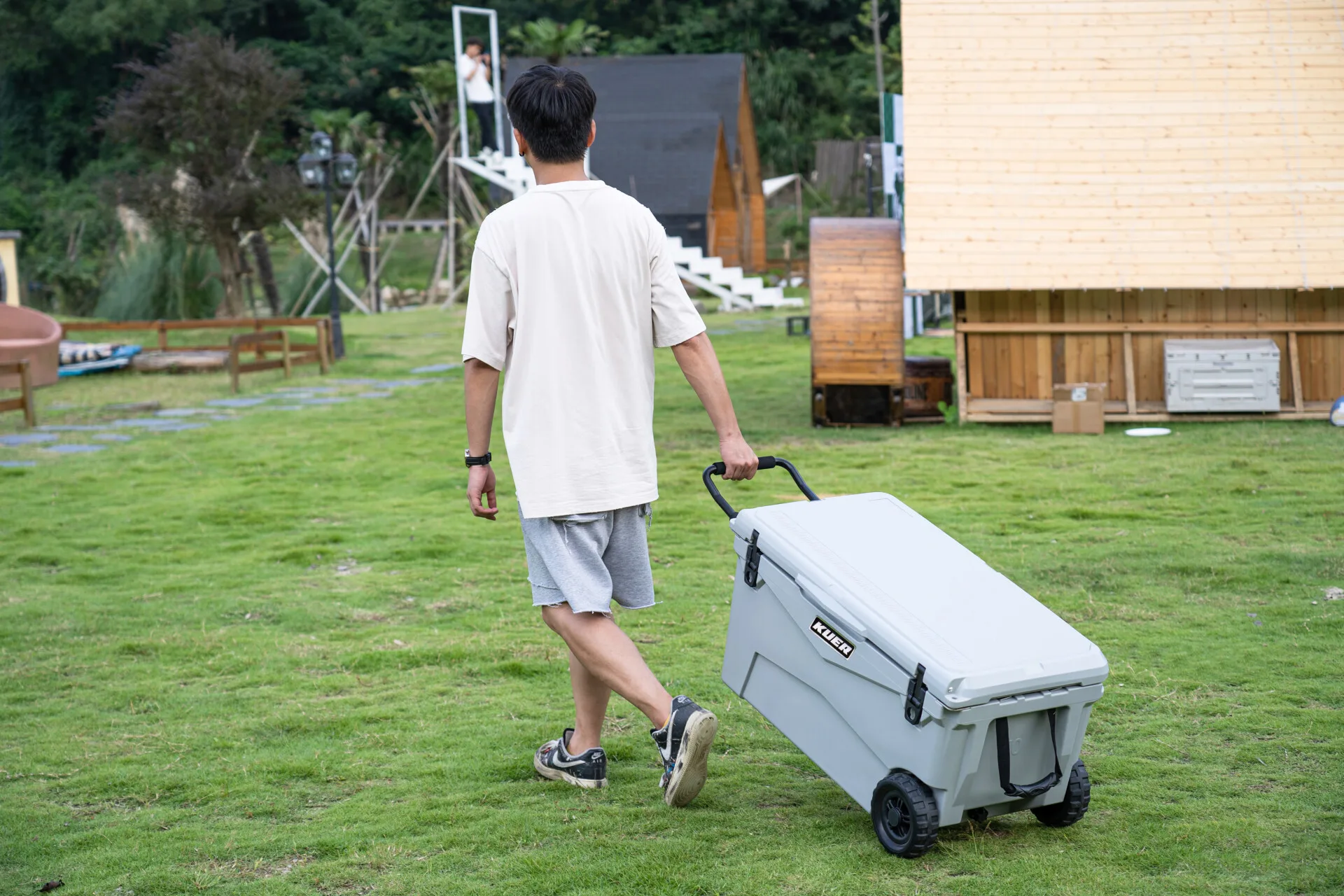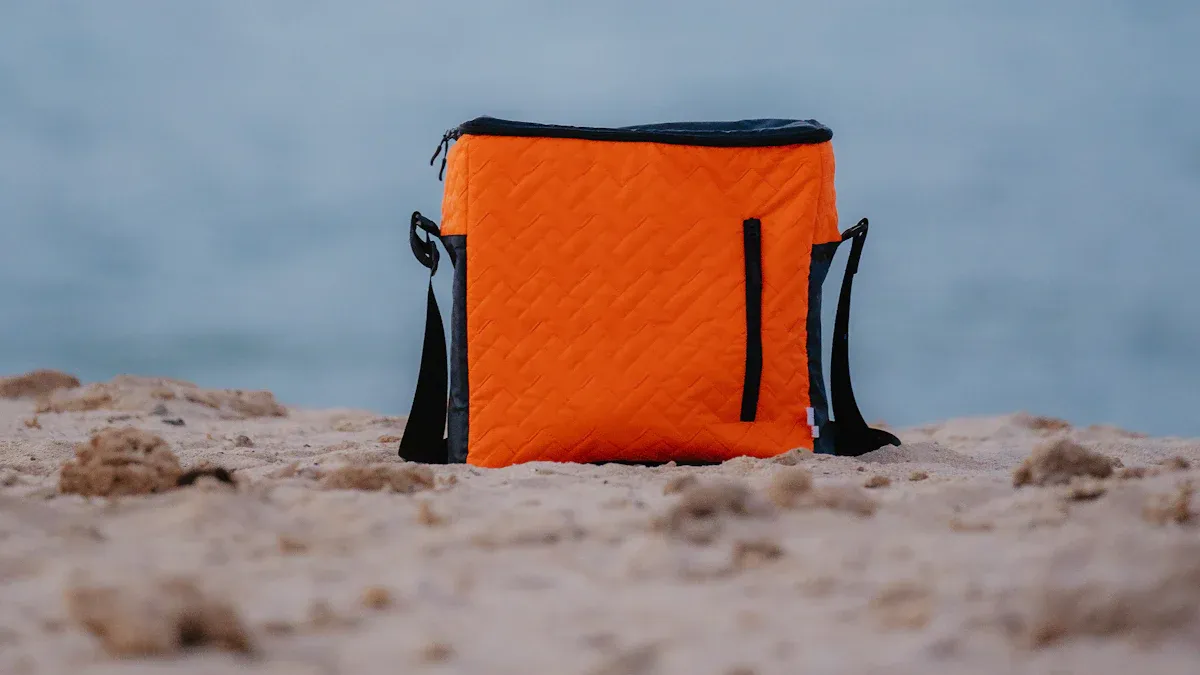
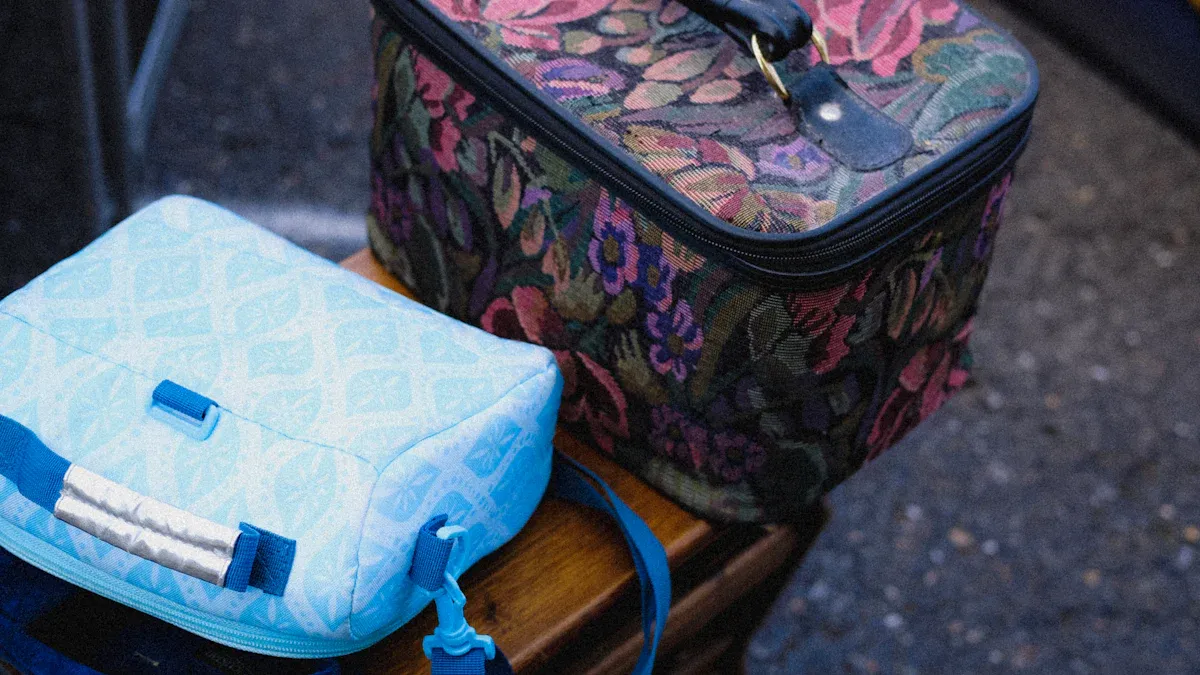
When you take good care of your large insulated cool bag, you make it last longer and keep it smelling fresh. Regular cleaning stops food and bacteria from building up and helps your cooler work better. KUER, known for quality outdoor gear, suggests these tips to boost your cooler’s performance.
Do’s for Large Insulated Cool Bag
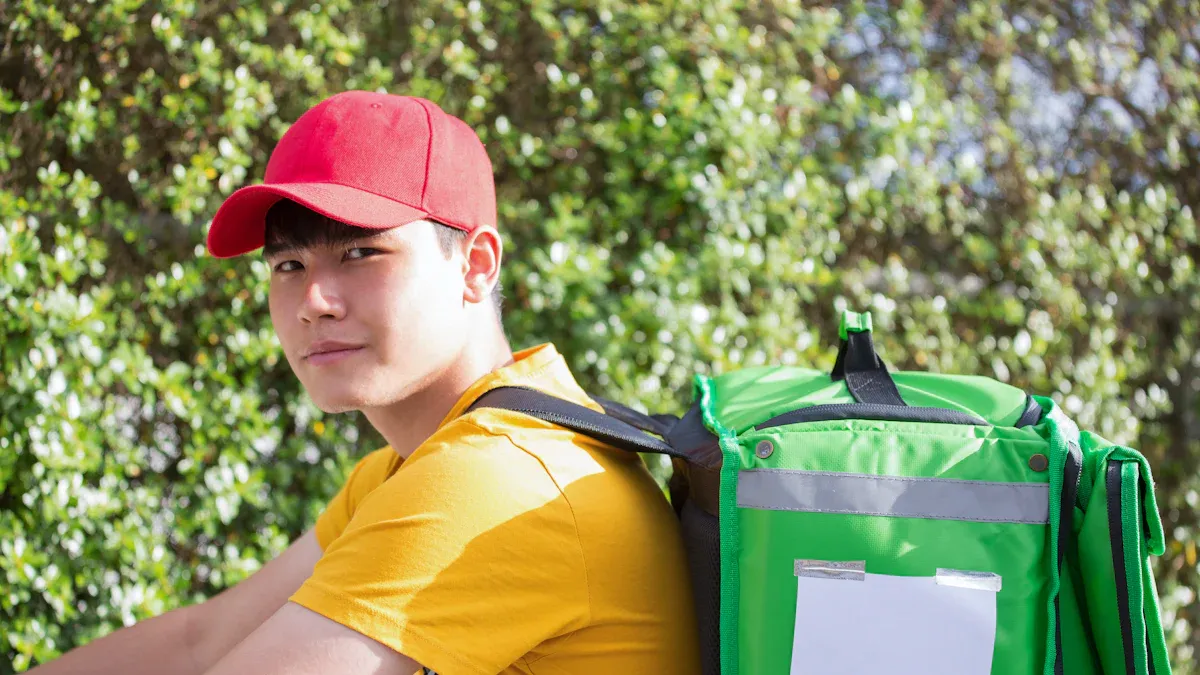
Regular Cleaning
You want your large cooler bag to last and keep your food safe. Regular cleaning is the first step. KUER, a leader in outdoor gear, recommends cleaning your large insulated cool bag after every use. This habit stops bacteria, mold, and odors from building up. If you use your cooler often, do a deeper cleaning every week or two. Wipe the inside with a damp cloth and mild soap. Some insulated cooler bags have removable linings, which makes cleaning easier. Always follow the manufacturer’s cleaning techniques for the best results.
- Regular cleaning helps you:
- Remove food residue and spills before they cause stains or smells.
- Prevent bacteria and fungi from growing inside your cooler.
- Keep the insulation working at its best.
Tip: Always dry your large cooler bag completely before you store it. This simple step keeps mold and mildew away.
Drying After Use
After cleaning, drying your large insulated cool bag is just as important. Moisture left inside can lead to mold, mildew, and bad odors. Here’s a quick guide to drying your cooler:
| Step | What to Do |
|---|---|
| 1 | Wipe down the interior and exterior with a clean towel. |
| 2 | Leave the bag open or hang it upside down to let air flow inside. |
| 3 | Avoid direct sunlight or heaters, which can damage the insulation. |
| 4 | Store in a cool, dry, and well-ventilated area. |
If you live in a humid place, put a desiccant packet (like silica gel) inside before you store your cooler. Replace the packet regularly to keep things fresh.
Proper Storage
Proper storage keeps your large cooler bag in top shape. Don’t cram it into a tight space or leave it in a damp basement. Compression and moisture can ruin the insulation and cause cold spots. Always store your cooler bag in a cool, dry, and well-ventilated area. Leave it slightly open or unzipped to let air circulate. This prevents moisture buildup and keeps odors away.
- Store your large insulated cool bag flat or upright, not folded or crushed.
- Use large breathable sacks if you need to cover it.
- Avoid direct sunlight, which can weaken the materials over time.
Note: Good cooler bag storage protects the insulation and extends the life of your cooler.
Careful Handling
Handle your large cooler bag with care to prevent damage. KUER’s quality control team tests every bag for strength, but you still need to treat it right. Use both shoulder straps to spread the weight evenly. If your cooler has chest or waist straps, use them for extra support. Never drag your cooler on rough ground or sit on it. These actions can damage the insulation and seams.
- Don’t overload your cooler bag. Stick to the recommended weight limit.
- Pack ice packs at the bottom for better cooling.
- Use sealed containers for drinks to avoid leaks.
- Fill empty spaces with smaller items to keep everything snug.
Rough handling can cause abrasion, stress on seams, and even punctures. Regular care and gentle use help your cooler last longer and keep its performance high.
Inspect for Damage
Make it a habit to check your large cooler bag for damage. Look at the seams, zippers, and insulation. If you spot a tear or a broken zipper, fix it right away. This stops small problems from turning into big ones. Regular inspection keeps your cooler bag leak-proof and ready for your next adventure.
- Check for mold, odors, or damp spots after every use.
- Make sure the insulation is intact and the zippers work smoothly.
- Repair any damage quickly to maintain durability and performance.
Tip: Quick repairs help you avoid cross-contamination and keep your cooler bag safe for drinks and food.
Use Food-Safe Liners
Food-safe liners add an extra layer of protection inside your large insulated cool bag. Materials like PEVA, TPU, or special metalized films are non-toxic and odorless. They keep dust, pests, and moisture away from your food. Welded or heat-sealed seams stop spills and leaks. Some liners even have antimicrobial treatments to fight bacteria.
- Food-safe liners are easy to clean and resist stains.
- Removable liners make targeted cleaning simple.
- These liners help you maintain food safety and prevent cross-contamination.
For safe food packing, always use containers and liners that meet food safety standards. This keeps your drinks and snacks fresh and your cooler bag clean.
Remember: Following these tips and KUER’s recommendations helps you get the most out of your large cooler bag. Regular care, proper storage, and careful handling keep your cooler performing at its best for years.
Don’ts for Insulated Cooler Bag
Overloading
You might think you can fit everything into your large cooler bag, but overloading is a big mistake. When you pack too much, you put stress on the zippers and seams. Heavy items can break the bottom and cause spills. Sharp objects like knives or forks can puncture the insulation. If you crush the contents or throw the cooler around, you shorten its lifespan. KUER designs cooler bags for strength, but even the best products need proper care. Stick to the recommended weight limit and pack smart. This helps your cooler last longer and keeps your food safe.
Common mistakes that reduce durability:
- Putting sharp objects inside the bag.
- Packing heavy items that risk breaking the bottom.
- Overloading, which can break zippers and pockets.
- Crushing contents or rough handling.
- Careless use of zippers.
- Improper storage, like keeping the bag wet or in direct sunlight.
Harsh Cleaners
Cleaning your insulated cooler bag is important, but using harsh cleaners can do more harm than good. Bleach, alcohol, steel wool, and abrasive chemicals damage the lining and insulation. These substances can scratch, warp, or even cause the inner layers to peel away. You should use mild detergent and gentle wiping methods. Natural or eco-friendly cleaning agents work best. Avoid soaking or machine washing the inner insulation layer. This keeps your cooler’s materials strong and safe for food.
Tip: Always choose gentle cleaning solutions to protect your large cooler bag’s lining and insulation.
Storing Wet
Never store your large cooler bag when it’s wet. Moisture trapped inside leads to mold, mildew, and bad odors. Wet storage can also weaken the insulation and cause materials to break down. After cleaning, dry your cooler completely before you put it away. Leave it open or hang it upside down to let air flow inside. If you live in a humid area, use a desiccant packet to absorb extra moisture. Proper drying and storage keep your cooler fresh and ready for your next adventure.
Sharp or Heavy Items
Sharp or heavy items can ruin your large cooler bag. Knives, forks, or other pointed objects puncture the insulation and make the bag wear out faster. Heavy items put pressure on seams and zippers, causing them to break. Overloading with many small or heavy things strains the bag and leads to damage. Always use containers for sharp objects and pack heavy items at the bottom. Handle your cooler gently to keep it in good shape.
- Sharp objects can puncture or break the insulation.
- Heavy items can exceed the weight limit and damage the bottom.
- Overloading strains seams and zippers.
- Rough handling shortens the cooler’s lifespan.
Sun and Heat Exposure
Leaving your large cooler bag in direct sunlight or high temperature areas is risky. Sun and heat break down the outer shell, insulation, and liners. UV rays can make nylon or polyester fade and weaken. Heat causes foam insulation to thin, which means your cooler won’t keep things cold as long. Food-grade liners can also wear out and grow mold if exposed to heat and moisture. Every 10°F increase in temperature reduces cold retention by 1–2 hours. Reflective liners help, but it’s best to store your cooler in a cool, shaded place.
| Material Component | Function/Property | Impact of Sun and Heat Exposure |
|---|---|---|
| Outer Shell (Nylon/Polyester) | Abrasion and UV resistance | Degrades with prolonged UV and heat exposure |
| Closed-Cell Foam Insulation | Reduces heat transfer | Thinner foam means faster thermal creep |
| Metallized Reflective PET Film | Reflects infrared radiation | Improves cold retention under sunlight |
| Heat-Welded Seams & Waterproof Zippers | Prevent warm air infiltration | Heat reduces insulation effectiveness |
| Food-Grade Liners (PEVA/TPU) | Leak-proof, hygienic inner barrier | Heat and moisture stress materials, risk mold growth |
Note: Always store your large cooler bag away from direct sunlight and high temperature areas to protect its insulation and cold retention.
Ignoring Odors or Damage
If you notice a bad smell or see damage in your large cooler bag, don’t ignore it. Persistent odors can mean mold, mildew, or even pests inside. These problems can cause health risks like allergies or breathing trouble. Structural damage, such as leaks, leads to more moisture and worse odors. If you leave these issues untreated, the damage gets worse and repairs cost more. Check your cooler after every use. Fix any problems right away to keep your cooler safe and ready for your next trip.
- Mold or mildew can grow if you ignore odors.
- Pest infestations cause smells and need safe removal.
- Leaks and damage lead to more moisture and deterioration.
- Quick repairs prevent bigger problems and protect your investment.
Tips: Regular inspection and prompt action keep your large cooler bag clean, safe, and long-lasting. KUER’s cooler bags are built for durability, but following these tips helps you get the most out of your gear.
Longevity Tips
Pre-Chilling
Want your large cooler bag to keep food and drinks cold for hours? Start by pre-chilling it. Place your cooler in the fridge or freezer for at least 30 minutes before you pack it. You can also toss in some ice packs or frozen water bottles to drop the temperature inside. This step cools the insulation and slows down ice melt. When you pack cold items into a pre-chilled bag, you help the insulation work at its best. Your food stays fresh, and your drinks stay icy longer. Experts say this simple move can boost longevity and keep your cooler performing like new.
Strategic Packing
How you pack your large cooler bag makes a big difference. Freeze meats, veggies, and drinks before loading them in. Use block ice or frozen bottles at the bottom, then layer food in airtight containers on top. Fill every gap with ice packs or towels to keep cold air trapped. Keep the cooler zipped tight and out of direct sunlight to protect the insulation and keep the temperature steady. If you pack smart, you avoid leaks, keep everything cold, and prevent damage to the insulation. Try using separate coolers for food and drinks to keep cold air inside longer.
Tip: Always wrap sharp items and place heavy things at the bottom. This protects the insulation and helps your high-quality cooler bag last even longer.
Quick Repairs
Don’t let small problems turn into big ones. Check your cooler every few months for loose seams, sticky zippers, or tiny holes. Fix issues right away—patch holes with waterproof tape, sew seams, and lubricate zippers. Clean up spills fast to stop stains and odors from setting in. These quick repairs keep your high-quality cooler bag in top shape and help boost longevity. With regular care, a KUER cooler can last three to seven years or more, giving you reliable insulation and performance for every adventure.
Cleaning Guide
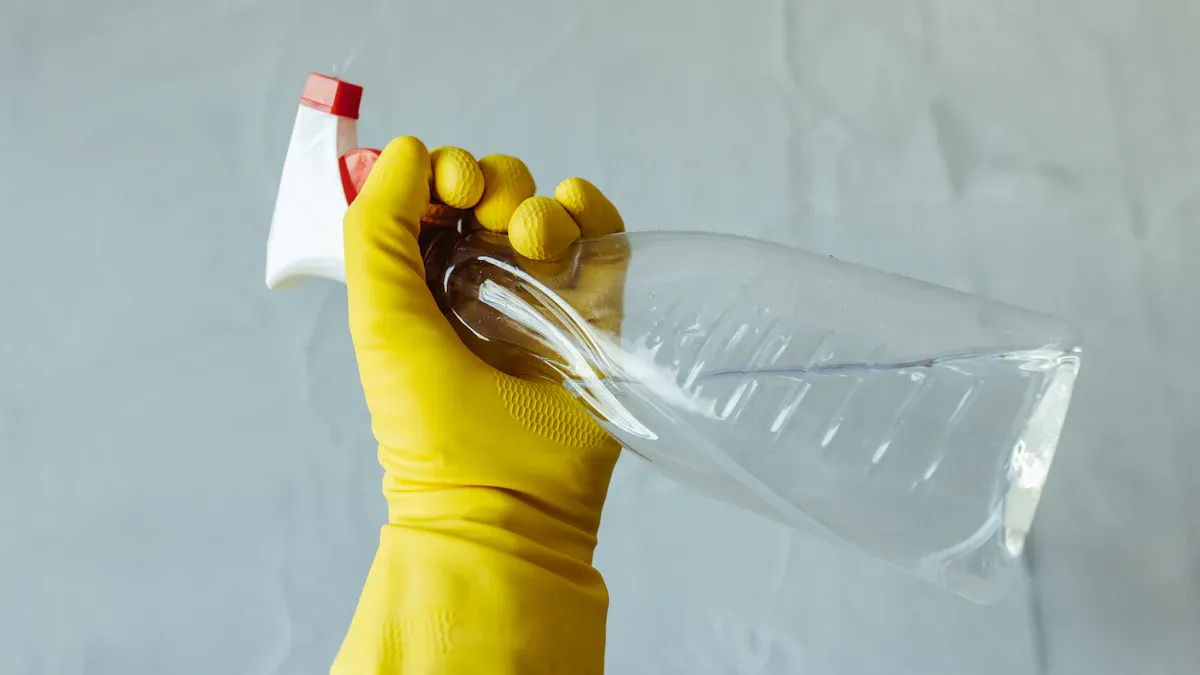
Mild Soap and Water
You want your insulated cooler bag to stay fresh and last a long time. Start with the basics. Use warm water and a few drops of mild dish soap. Dip a soft cloth or sponge into the soapy water. Wipe the inside and outside of your cooler. Pay extra attention to corners and seams where crumbs or spills hide. Rinse the cloth with clean water and wipe away any soap left behind. Dry the bag with a towel, then let it air dry completely. This simple cleaning method keeps your cooler looking new and protects the insulation.
Here are some safe cleaning products you can use:
- Mild dish soap and warm water for everyday cleaning.
- Vinegar and water mix for a natural clean.
- Anti-bacterial wipes for quick touch-ups.
- Store-bought cleaning sprays for tough stains.
- Hydrogen peroxide for organic stains, but use it carefully.
Baking Soda for Odors
Sometimes, your insulated cooler bag might pick up smells from food or drinks. Baking soda works great for this. Sprinkle a little baking soda inside the bag. Let it sit for a few hours or overnight. Baking soda is alkaline, so it neutralizes acidic odors and leaves your bag smelling fresh. If you need a deeper clean, make a paste with baking soda and water. Spread it on any stained or smelly spots, then wipe it off with a damp cloth. This targeted cleaning technique helps remove stubborn odors and stains.
Tip: Avoid mixing baking soda and vinegar inside your bag. The foaming reaction can get messy.
Avoid Machine Washing
You might think tossing your insulated cooler bag in the washing machine is easy, but it can cause problems. Machine washing can damage the waterproof lining and seams. Most manufacturers suggest gentle cleaning by hand. If your care label says machine washing is safe, use the gentlest cycle and mild detergent. Never use bleach or fabric softener. Always air dry your bag to protect the insulation and prevent mold. Hand cleaning keeps your cooler in top shape and ready for your next adventure.
You want your cooler bag to last and work well. Here are the key steps:
- Pick a bag with strong materials and thick insulation.
- Clean and dry it after every use.
- Store it open in a cool, dry place.
- Fix small problems fast.
A little care keeps your KUER cooler bag ready for every adventure! 🧊
FAQ
How often should you clean your large insulated cool bag?
You should clean your bag after every use. This keeps bacteria and odors away. Regular cleaning helps your cooler last longer and work better.
Can you put your cooler bag in the washing machine?
No, you should not. Machine washing can damage the insulation and seams. Always wash your cooler bag by hand with mild soap and water.
What should you do if your cooler bag smells bad?
Sprinkle baking soda inside the bag. Let it sit overnight. Wipe it out the next day. This removes most odors and keeps your bag fresh.


